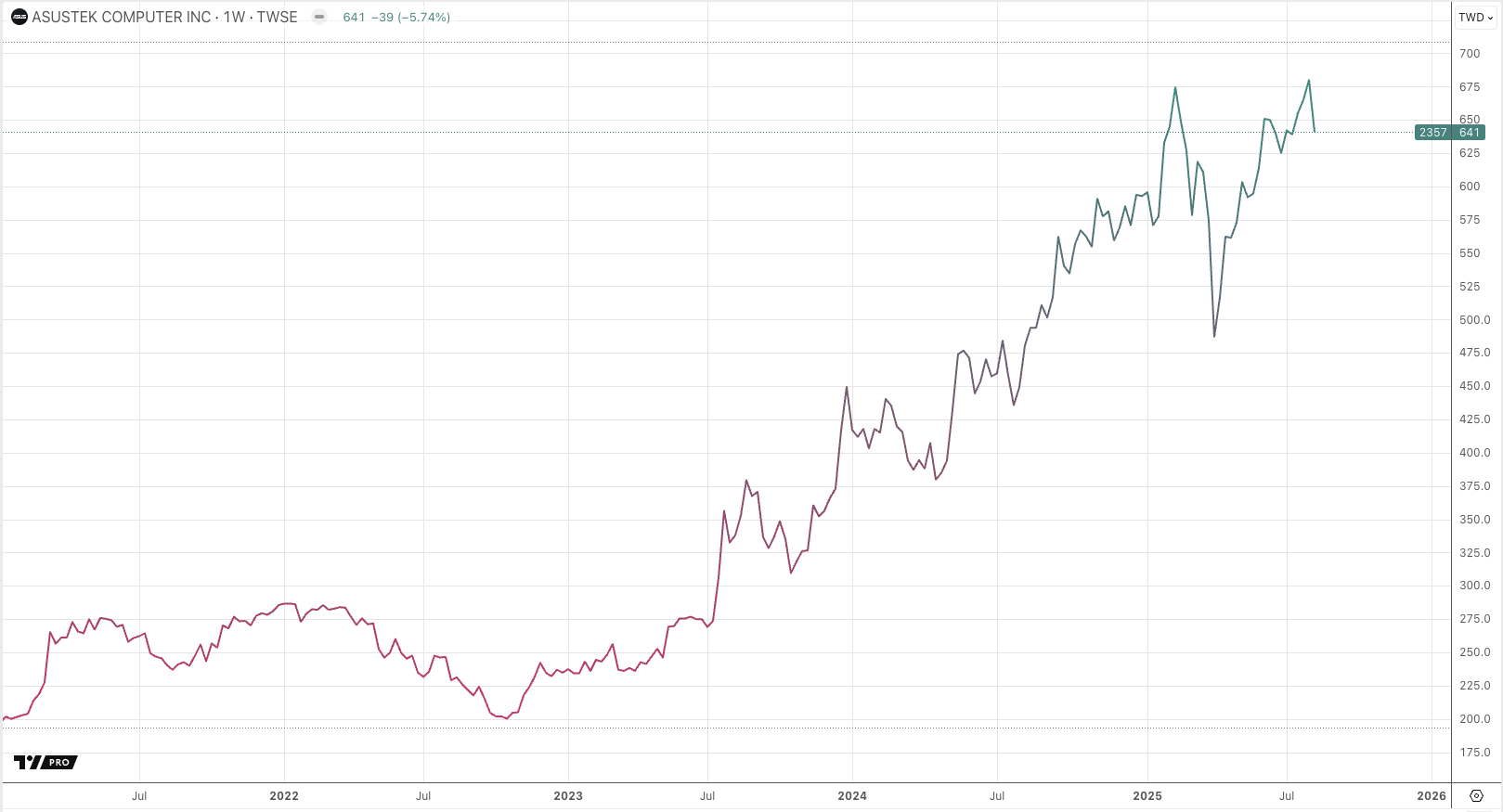Taiwanese Asustek Computer, known for its motherboards, graphics cards, and off-the-shelf PCs, has been among those technology manufacturers that are most actively rebuilding production chains in response to US customs policy. The changes are already reflected in many indices and derivatives, such as S&P 500 futures.
If a few years ago most products for the American market were produced in China, today almost 90% of these volumes have been transferred to neighboring countries in Southeast Asia.

Despite the continued import duties of 30% on Chinese-made electronics, the company did not wait for the next round of tariff pressure. As Asustek Computer representatives themselves note, the increase in production capacities in Thailand, Vietnam, and Indonesia allows for the supply of motherboards and ready-made computers to the United States.
Thus, by avoiding a significant portion of the additional customs duty costs, the company retains the main profit, and potential costs do not fall on its shoulders. At the same time, we are talking not only about assembly, but also about the full deployment of supply chains in new countries, including warehouse infrastructure and logistics.
Unlike Lenovo, whose representatives comment on the negative impact of US tariffs with overstated calmness, Asus openly warns that if US customs policy changes, it may have to raise product prices. So far, the company is betting on the accelerated relocation of production facilities in order to minimize dependence on Chinese sites.
The White House policy explains why Asus remains uncertain. US President Donald Trump extended the tariff hike deferral until November 10, giving companies a few months to adjust. This makes November 10 a key date to watch on the economic calendar, as it could trigger important market shifts.
For Asus, this deferral was critical because the company was able to complete the deployment of key production lines in Thailand and Vietnam during this time.
An important feature of Asus is that TSMC produces a significant part of the company's semiconductor components. Since it is not subject to increased duties, Asus has some protection in an environment of trade policy instability.
At the same time, September may be a turning point for most producers. The US authorities are considering the possibility of increasing duties on graphics cards and motherboards supplied from China.
If this scenario comes to pass, the company will find itself in a situation where even partial localization of production outside of China will not save it from pressure on margins. In this case, the only compensation tool will be an increase in retail prices, which Asus no longer excludes in its public comments.
Thus, Asus's migration of production facilities to Southeast Asia is not just a response to current tariff challenges, but also a strategic restructuring of supply chains. The question is whether the company will be able to completely avoid tariff risks before new trade measures are adopted in the United States, or whether it will have to adapt to circumstances in which production costs and retail prices increase simultaneously.







